Time and Transformation
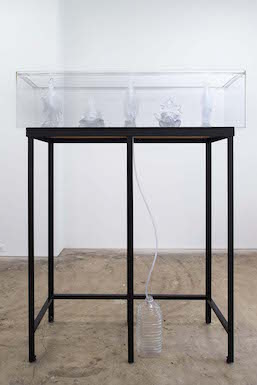
Kyoko Hamaguchi, the artist who created this installation, calls it God of the Day. Hamaguchi is a Tokyo University of the Arts graduate and an MFA student at Hunter College in New York. Her work deals with themes of transformation, circulation, and time. She also often employs pinhole cameras, as she did at this exhibition, “Do Gods Travel Lightly?”
In an upper corner of the room Hamaguchi had installed Space Watcher, a pinhole camera with an exposure that lasted for the one-month duration of the show. Meanwhile, the photograph End to End (NYC Subway), taken with another pinhole camera, was arranged in the melting gods’ line of sight. The image captured the two-minute exposure of the end-to-end journey of New York City’s S Train. Together, these three pieces spoke to themes the multimedia artist continues to explore.
Tokyo Art Beat interviewed Hamaguchi about her work.
“My installations take many different forms but conceptually they are also rooted in the nature of photography.”
TAB: Your works are expressions of clear ideas. Do you consider yourself a conceptual artist?
KH: I think every artwork has conceptual and visual components, but the emphasis varies. For me, the concept takes priority and drives my decisions about form, materials, and processes. I am constantly searching for ways to utilize a material’s fundamental properties to reveal new perspectives about the systems and structures of everyday life. Still, I am invested in the visual outcome and the aesthetic properties of the work, so there is always a push and pull while I am working.
TAB: You started out in oil painting but now work in photography and installations. What has shifting between media been like for you?
KH: In my oil paintings, I was putting down 15 to 20 layers in each painting. As I waited for each layer to dry, time was piling up. This accumulation of time became one of my interests. While exposing a photograph, marks also accumulate as a function of time, so I found photography to be a natural continuation of my interest. My installations take many different forms but conceptually they are also rooted in the nature of photography.
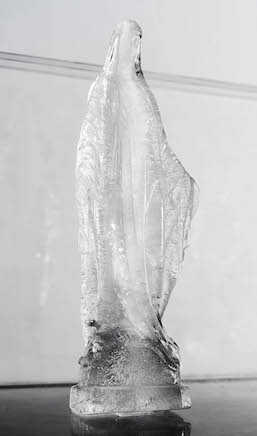
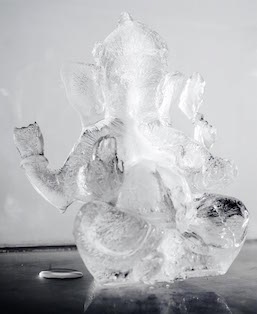
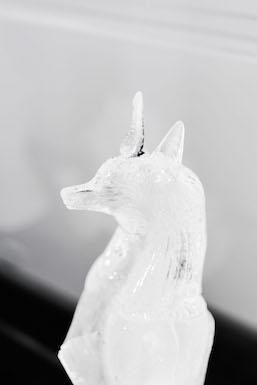
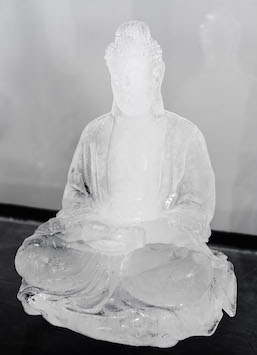
“I was wondering if symbols of belonging or objects of faith, which are so often essential markers of identity, could also be presented as flexible.”
TAB: How did you choose the five particular gods for God of the Day?
KH: God of the Day is a project with multiple iterations. Each version has a unique combination of gods. I try to choose a diverse grouping from a variety of geographic locations around the world, showcasing gods with a range of physical characteristics.
TAB: To me, God of the Day speaks to a kind of pantheism or interchangeability among religions. Is this the message you were going for?
KH: Today, people, ideas, information, and news travel faster and more flexibly than ever before. With the Internet, it is possible to look up anything at any time instantly and to move from one topic to another fluidly. So, I was wondering if symbols of belonging or objects of faith, which are so often essential markers of identity, could also be presented as flexible. This could be thought of as interchangeability as you say. Perhaps a single spirit can move fast enough to inhabit all of the gods. In God of the Day, the morphing and fluidity of water becomes analogous to this transformative spirit, melting, mixing, and reforming into each god.
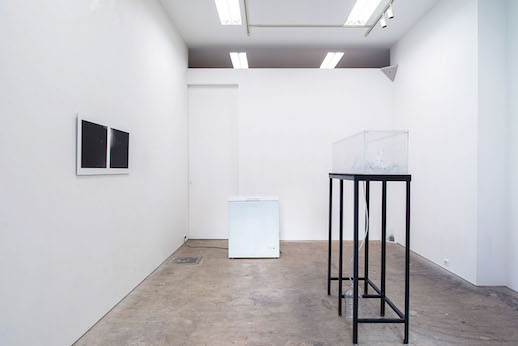
“Immigrants are always circulating between their original home and their new one, even if they are not doing so physically.”
TAB: You’re interested in migration, fluidity, and the passage of time. How do these ideas fit together for you?
KH: For me, circulation is the key word that connects migration, fluidity, and the passage of time. The unprecedented ability to move through the world enables people and ideas to travel and interact with each other to form new identities and notions of home. Immigrants are always circulating between their original home and their new one, even if they are not doing so physically. The fluid mixing of old and new cultures becomes a unifying force that breaks down antiquated barriers. All of these interactions and processes happen in time and may also be revealed through it.
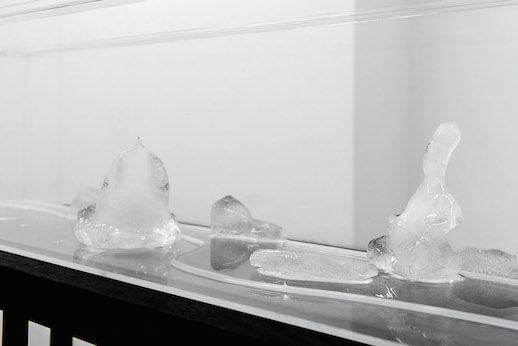
“By following my instincts rather than trying to make something that someone else thinks constitutes ‘Japaneseness,’ I believe I can better understand my culture.”
TAB: How has moving between Japan and New York influenced your practice?
KH: New York is a place where many cultures from around the world mingle together. So, you have to stand strong to keep hold of your identity and ethnicity. However, I also realized that in the art world there are so many biases about who you are and what you are interested in based on your background. Often people expect an artist who came from Japan to make work about their “Japaneseness.” But the “Japaneseness” they think of is far different from what I experienced in my country. These expectations I felt when I moved from Japan to New York had the effect of making me even more determined not to change anything I had previously pursued. By following my instincts rather than trying to make something that someone else thinks constitutes “Japaneseness,” I believe I can better understand my culture.
TAB: How is working and living in New York at the moment?
KH: In New York, we have experienced “stay-at-home orders” for two and a half months, and now, after George Floyd’s brutal murder at the hands of police in Minneapolis, we are out in the streets protesting to fight systemic racism. We have gone from extreme isolation to intense gathering. This fluctuation and the energy and purpose behind it has been astonishing to witness and participate in. Listening as much as I can has helped me understand the injustices deeply rooted not only in America but in countries all over the world that continue to this day. For me, this moment has been a time of witnessing and learning new histories, not only by reading about them but by experiencing history in the making.



